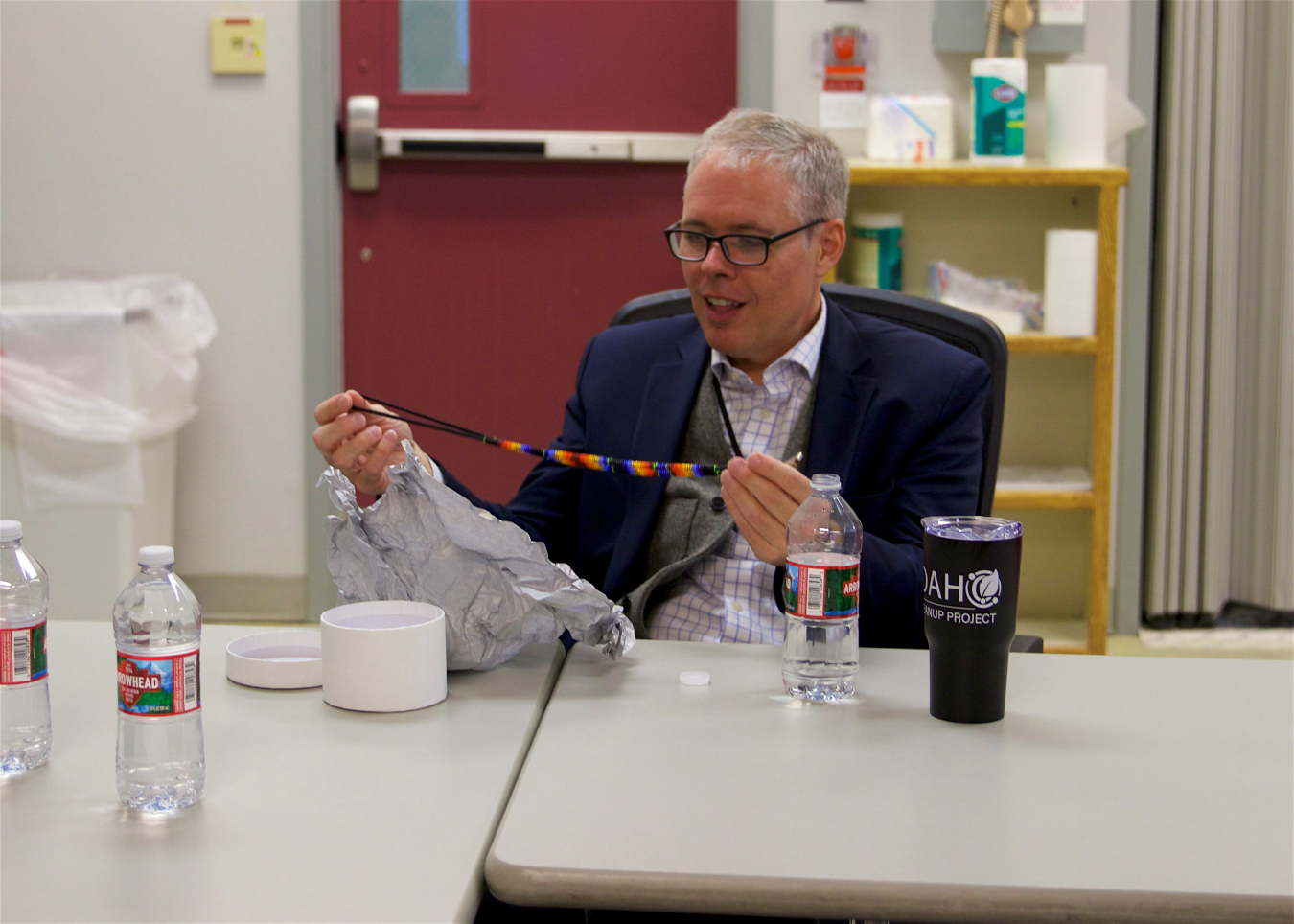EM Senior Advisor William “Ike” White recently visited the DOE Idaho National Laboratory (INL) Site, where he surveyed progress on major cleanup projects,
Office of Environmental Management
April 12, 2022IDAHO FALLS, Idaho – EM Senior Advisor William “Ike” White recently visited the DOE Idaho National Laboratory (INL) Site, where he surveyed progress on major cleanup projects, attended a celebration to mark the completion of buried waste exhumation at a Cold War-era landfill and met with members of the Shoshone-Bannock Tribes.
White’s visit included a stop at the historic Naval Reactors Facility (NRF). DOE Idaho Operations Office managers and personnel from the Idaho Environmental Coalition, the EM INL Site cleanup contractor, showed the head of the cleanup program current and planned decontamination and decommissioning (D&D) projects. That work includes D&D of the prototype for a reactor plant used for the first nuclear-powered submarine. Other NRF facilities are scheduled for D&D, an effort that will take several years to complete at a cost of $1 billion.
Near the Idaho Nuclear Technology and Engineering Center, White visited the Idaho Comprehensive Environmental Response, Compensation, and Liability Act (CERCLA) Disposal Facility, a 510,000-cubic-yard lined landfill that accepts cleanup waste from across the 890-square-mile INL Site.
DOE, the U.S. Environmental Protection Agency (EPA) and state of Idaho propose expanding the landfill to accommodate newly generated debris from the NRF reactor demolition projects and additional cleanup work projected to generate slightly contaminated soil and debris. In operation since the early 2000s, the disposal facility is at 80% capacity. The onsite facility has allowed DOE to avoid spending hundreds of millions of dollars in taxpayer funds on transporting contaminated soil and debris offsite to federal and commercial disposal facilities.
EM Senior Advisor William “Ike” White, second from right, and Idaho Cleanup Project Manager Connie Flohr, far right, speak with representatives of the Shoshone-Bannock Tribes, including Tribal DOE Program Senior Scientist Keith Moore, far left, and Tribal DOE Cultural Resources Specialist LaRae Bill.
White also met with management and engineers from the Integrated Waste Treatment Unit. The waste treatment facility was constructed to treat 900,000 gallons of sodium-bearing waste from nearby waste tanks that received decontamination solution and other liquid waste from spent nuclear fuel reprocessing that ended in 1992. The facility uses steam-reforming technology to convert liquid waste into a more stable granular solid.
White gathered with members of the workforce at the Accelerated Retrieval Project (ARP) to thank them for completing targeted buried waste exhumation — an EM priority for 2022 — 18 months ahead of schedule.

ARP work began in 2005 to remove graphite molds, solidified sludges, plutonium-contaminated filters and uranium metal fines from a section of the 97-acre Subsurface Disposal Area (SDA), which received waste from the former Rocky Flats Plant and other offsite waste generators from 1954 to 1970. In 2008, DOE, EPA and the state of Idaho signed a record of decision to remove targeted waste from 5.69 acres of the landfill.
With the recent completion of buried waste retrieval, the soft-sided buildings covering the dig sites will be dropped in place and an earthen cover will be constructed over the entire SDA.
White’s busy day concluded with meeting members of the Shoshone-Bannock Tribes. The tribes have followed EM’s cleanup progress since the INL Site was added to the EPA’s National Priorities List of Superfund Sites in 1989. DOE maintains ongoing dialogue with the tribes and regularly consults them, as the INL Site is located on Shoshone-Bannock ancestral lands. The tribal staff members present at the meeting presented White with beadwork in appreciation of his visit.
To receive the latest news and updates about the Office of Environmental Management, submit your e-mail address.

